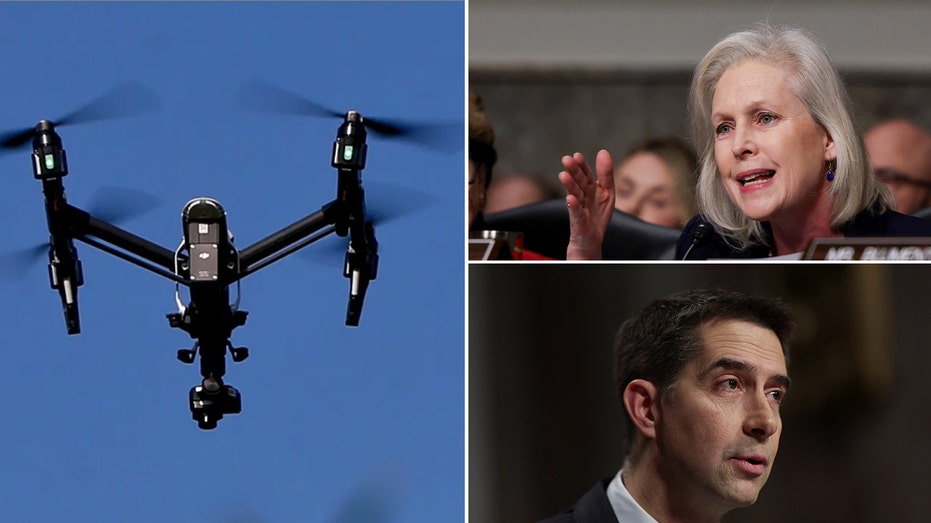See the 2 anti-drone missiles the US Navy is using to defend aircraft carriers

Raytheon
- The US Navy is deploying two UAV interceptors to defend its aircraft carriers from drones.
- Anduril's Roadrunner-M and Raytheon's Coyote are set to launch from destroyers.
- The move could solve the "cost-curve" problem of firing costly missiles to down cheap drones.
The US Navy is arming its warships with two reusable anti-drone interceptors designed to counter aerial threats at a fraction of the cost of traditional missiles.
Anduril's Roadrunner-M and Raytheon's Coyote Block 2 interceptors will be launched from Arleigh Burke-class destroyers, which will accompany the Navy supercarrier USS Gerald R. Ford on its deployment to the Middle East later this year.
Amid the rising aerial threat posed by Iranian-backed Houthi militants in Yemen, the Roadrunner-M and the Coyote are designed to act as expendable and automated interceptors against other drones. They can be airborne when the strike group is in a threatening area and then assigned to an incoming threat that's detected, cutting the response time.
The autonomous systems are part of the sea service's efforts to address its "cost-curve problem" of spending far more to defend its fleet from hostile threats than adversaries spent to launch them. The missiles are more expensive than much of the Houthi arsenal, but they still substantially reduce the US Navy's cost of self-defense.

US Navy photo by Mass Communication Specialist 2nd Class Najwa Ziadi
Earlier this year, the Ford carrier strike group departed its homeport in Norfolk for a routine training exercise ahead of its potential deployment to the US 5th Fleet.
The composite training unit exercise was adapted to prepare US forces for the drone fight against Houthi drones and missiles in the Red Sea, putting the anti-drone interceptors to the test.
Capt. David Dartez, commander of Carrier Air Wing Eight, told the Norfolk local news station WTKR that a "big example" of the changes includes "a lot of unmanned aircraft and training against those unmanned aircraft."
The anti-drone missile interceptors are designed to act as short-range loitering munitions, capable of targeting drones nearly 10 miles away.

Raytheon
The Raytheon Coyote Block 2 is an expendable counter-drone aircraft designed for surveillance, electronic warfare, and precision strikes.
The small high-speed drone is estimated to cost about $125,000 per unit. The Coyote launches from a small container and deploys wings; it can operate for up to one hour and carry various payloads.
The Coyote is propelled by a boost rocket motor and a turbine engine, allowing it to "handle reasonably large accelerations during launch, a critical feature for all tube-launch applications," according to Raytheon."

Anduril
Anduril founder Palmer Luckey described the Roadrunner-Munition as "somewhere between a reusable missile and a full-scale autonomous aircraft."
The roughly $500,000 Roadrunner-M, the explosive variant of Anduril's reusable autonomous aerial vehicle (AAV), is purpose-built to detect and target aerial threats.
Its twin turbojet engines are capable of vertical take-off and can fast-maneuver to intercept an assigned target, or even circle around until one is acquired and land back on its ship if not.

US Army photo by Staff Sgt. Fred Brown
The US military has already acquired Roadrunner-M and Coyote drones as part of the Pentagon's push for AI-driven ground-based air defense capabilities.
In October, the Defense Department procured over 500 Roadrunner-M interceptors as part of a nearly $250 million contract with Anduril.
The US Army has also integrated the Coyote as a crucial component in its counter-UAS strategy, known as the "Low, slow, small, unmanned aircraft Integrated Defeat System" (LIDS).
"Both these systems were originally designed for use over land; however, the US Navy has tested and demonstrated these systems in the maritime environment," Capt. Ronald Flanders, a spokesman for the Navy's research and acquisition department, told Military.com.

Nathan Howard/REUTERS
The Roadrunner-M and the Coyote are "both specifically designed to go after UAVs," Navy Adm. Daryl Caudle, head of US Fleet Forces Command, told reporters in March.
The anti-drone interceptors add more firepower and magazine capacity to protect high-value naval assets like aircraft carriers without sacrificing larger and more expensive missiles stored in the ship's vertical launchers.
Costing from $125,000 to $500,000 per unit, the drone-killers come at a fraction of the cost of the cheapest interceptors with a similar range currently in use by the Navy.
The Roadrunner-M is just over half the $920,000 cost of the short-range Rolling Airframe Missile, and it only gets more expensive from there. The medium-range Evolved Sea Sparrow Block 2 interceptor costs about $1.5 million per unit, the longer-range SM-2 missiles carry a price tag of about $2 million, and SM-6 missiles cost over $4 million each.
The Navy said in January that nearly 400 munitions, including over 100 SM-2 missiles, 80 SM-6 missiles, and 20 ESSM and SM-3 missiles, had been fired to counter Houthi strikes since October 2023. The Trump administration called off an intensified air war in early May in exchange for a Houthi agreement to cease attacks on shipping.

US Navy photo by Mass Communication Specialist 2nd Class Maxwell Orlosky
Because multimillion-dollar missiles and other expensive weapon systems are often used as counter-drone defense, the Navy is facing mounting pressure to address its so-called "cost-curve problem."
Smaller missiles to counter smaller threats may be only part of a future solution. The UK military is deploying a new laser weapon to four of its ships. Lasers face technical issues at sea but offer the possibility of zapping an unlimited number of threats.



